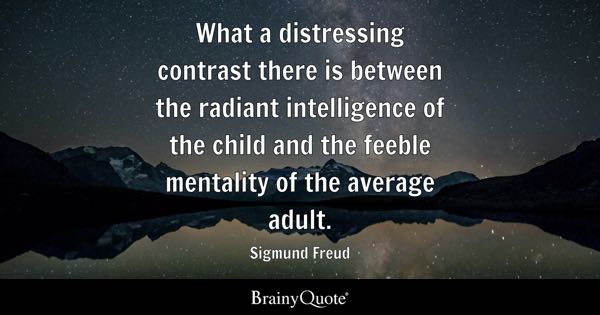
The Power of Contrast: Quotes That Illuminate the Beauty of Black & White Images
In a world saturated with color, the stark simplicity of black and white photography offers a powerful counterpoint. It’s a realm where shadows dance, textures sing, and the essence of a moment is distilled to its purest form. The beauty of black and white lies not just in its aesthetic appeal, but in its ability to strip away distractions and reveal the raw emotion and inherent drama of a scene. This article explores the profound impact of black and white imagery, enhanced by insightful quotes that amplify its artistic and emotional resonance. We will delve into how photographers harness the power of contrast to create timeless works, and how these images continue to captivate audiences across generations. The power of contrast is the key to unlocking the magic.
The Timeless Allure of Monochrome
Black and white photography, often referred to as monochrome, predates color photography and holds a unique position in the history of art. Its enduring popularity stems from its ability to transcend trends and capture the essence of a subject in a way that color sometimes obscures. Without the distraction of hues, the viewer’s eye is drawn to form, texture, and light – the fundamental elements of visual storytelling. The power of contrast becomes paramount, dictating the mood and directing the gaze. A photograph’s impact is often amplified by the absence of color, forcing the viewer to focus on the interplay of light and shadow, the nuances of gray tones, and the emotional core of the subject.
Consider the iconic images of Dorothea Lange, Ansel Adams, and Henri Cartier-Bresson. Their black and white photographs are not just records of events or landscapes; they are evocative explorations of human experience and the natural world. The choice of monochrome wasn’t merely a technical limitation of the time; it was a deliberate artistic decision that amplified the message. The power of contrast in these images is a testament to the photographer’s vision and skill.
Quotes That Speak to the Essence of Black and White
The following quotes, from photographers, artists, and thinkers, further illuminate the profound impact of black and white photography. They provide a deeper understanding of the artistic principles and emotional resonance inherent in this powerful medium.
- “To see in black and white is to see the world in its simplest form.” – Anonymous. This quote succinctly captures the essence of monochrome’s appeal: its ability to distill a scene to its core elements, free from the complexities of color.
- “Black and white is the color of photography.” – Robert Frank. Frank’s statement highlights the inherent connection between the medium and its most fundamental aesthetic. Black and white is not just a style; it’s a language.
- “The world is in color, but black and white is more real.” – Paul Strand. Strand’s provocative statement suggests that monochrome can reveal truths that color might hide, emphasizing the emotional depth and timeless quality of black and white images.
- “When you photograph people in color, you photograph their clothes. But when you photograph people in black and white, you photograph their souls.” – Ted Grant. This quote underscores the powerful ability of black and white to penetrate the surface and reveal the inner essence of a subject. The power of contrast is amplified by this focus.
- “Black and white creates a strange dreamscape that color never can.” – Jack Antonoff. Antonoff, a musician, recognizes the surreal and evocative quality of black and white, suggesting that it can transport viewers to another realm.
Harnessing the Power of Contrast in Photography
The power of contrast is the photographer’s most potent tool in black and white. It refers to the range of tones within an image, from the deepest blacks to the brightest whites. Manipulating this contrast is key to controlling the mood, emphasizing textures, and guiding the viewer’s eye. Here’s how photographers leverage contrast:
- Lighting: The direction and intensity of light are crucial. Harsh light creates strong shadows and high contrast, while soft light produces a more subtle range of tones.
- Composition: The arrangement of elements within the frame is essential. Strategic placement of light and dark areas can draw the viewer’s attention to specific points of interest.
- Post-Processing: Digital photography offers extensive control over contrast. Adjustments to exposure, highlights, shadows, and curves can dramatically alter the final image.
- Subject Matter: Certain subjects naturally lend themselves to black and white. Dramatic landscapes, portraits with strong expressions, and scenes with compelling textures often benefit from monochrome treatment.
The interplay of light and shadow is the essence of black and white photography. A skilled photographer understands how to use these elements to create depth, texture, and emotional impact. The power of contrast allows them to sculpt the image with light, guiding the viewer’s eye and conveying a specific message.
Examples of Black and White Photography’s Impact
The impact of black and white photography is evident across various genres, from documentary to fine art. Consider these examples:
- Documentary Photography: Black and white has been a cornerstone of photojournalism for decades, capturing the harsh realities of war, poverty, and social injustice. Images like those from the Vietnam War or the Great Depression are unforgettable, their impact amplified by the absence of color. The power of contrast in these images is often the difference between a fleeting image and an enduring testament to human experience.
- Portrait Photography: Black and white portraits can reveal the inner character of a subject in a way that color often cannot. The focus shifts from superficial details to the subject’s expression, gaze, and the lines on their face, creating a more intimate and powerful connection.
- Landscape Photography: Black and white landscapes can evoke a sense of timelessness and drama. The absence of color forces the viewer to focus on the form, texture, and light, highlighting the grandeur and beauty of the natural world.
- Street Photography: Black and white is ideally suited for capturing the fleeting moments and everyday life of street scenes. The power of contrast can accentuate the energy and emotion of a scene, drawing the viewer into the heart of the action.
The Enduring Legacy of Black and White
Despite the prevalence of color photography, black and white continues to thrive. It remains a powerful medium for artistic expression and storytelling. Its enduring appeal lies in its ability to strip away distractions and reveal the raw, emotional core of a scene. The power of contrast, the manipulation of light and shadow, and the timeless quality of monochrome ensure that black and white photography will continue to captivate audiences for generations to come.
The quotes highlighted in this article, from photographers and artists, provide further insight into the artistic principles and emotional resonance of black and white photography. The ability to create a strong visual statement is greatly enhanced by the power of contrast. Whether you’re a seasoned photographer or a casual admirer, exploring the world through the lens of black and white offers a unique and rewarding experience. The power of contrast is not just a technical consideration; it’s a fundamental element of visual storytelling. Consider the ways in which the power of contrast can be used to improve the impact of your own photographs. The enduring appeal of black and white reminds us that sometimes, less is indeed more, and that the most profound images are often the simplest.
Conclusion
Black and white photography’s enduring appeal lies in its ability to distill the essence of a moment, drawing viewers into a world of light, shadow, and emotion. The power of contrast is the cornerstone of this art form, allowing photographers to create timeless images that resonate across generations. As we’ve seen, the interplay of light and shadow, combined with strategic composition and post-processing, allows for profound artistic expression. The quotes from renowned figures in the field provide further insight into the artistic principles and emotional impact of monochrome. In a world saturated with color, the beauty of black and white images reminds us of the power of simplicity and the enduring legacy of a classic art form.
The next time you encounter a striking black and white photograph, take a moment to appreciate the photographer’s skill in harnessing the power of contrast. Consider the way light and shadow interact, the textures that emerge, and the emotions that are evoked. You may find yourself drawn into a world of depth, drama, and timeless beauty. The power of contrast ensures that these images will continue to inspire and captivate for years to come.
[See also: The Art of Composition in Photography]
[See also: Mastering Light and Shadow in Photography]
[See also: The History of Photography]

